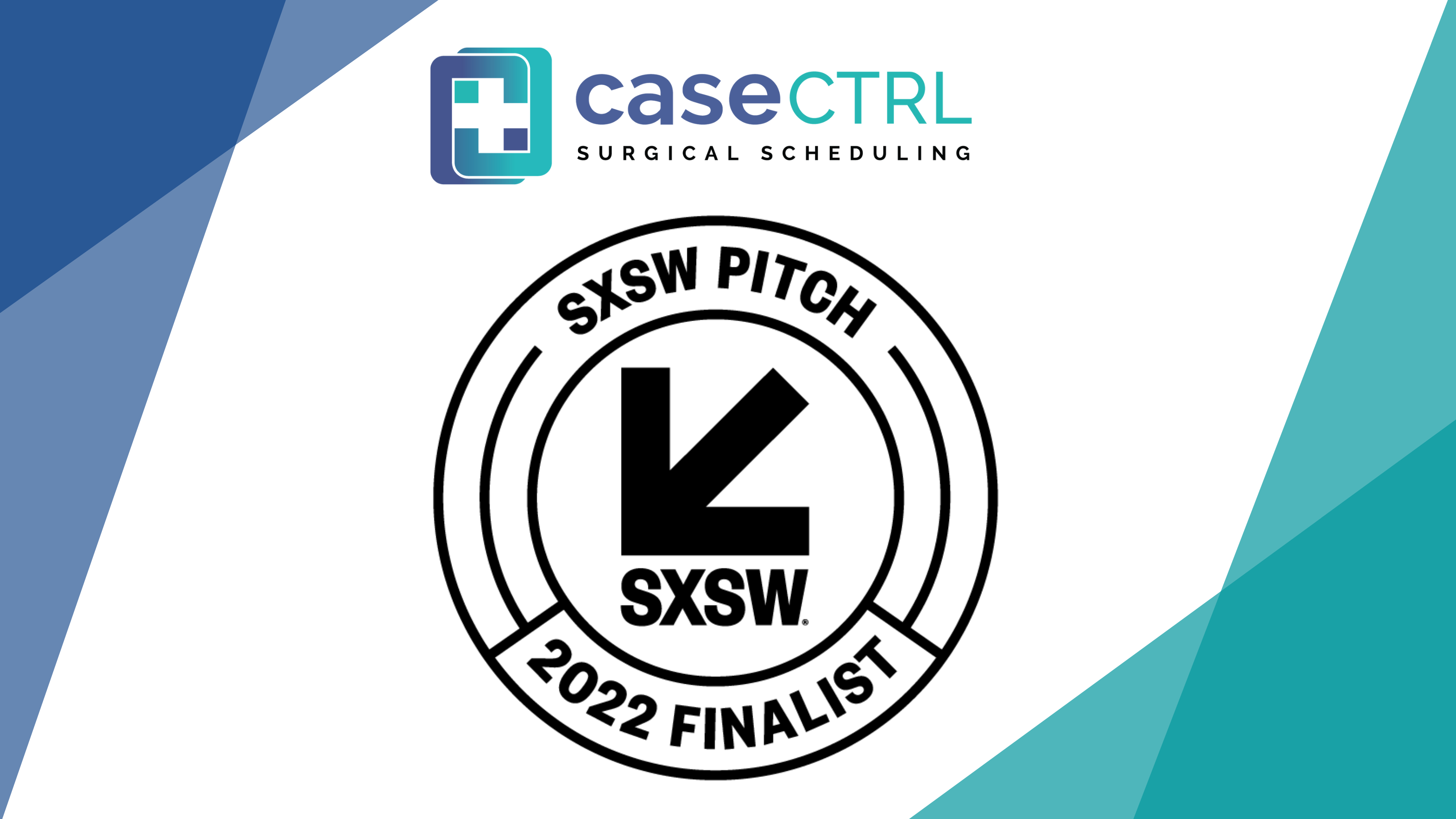Block scheduling has become the de facto gold standard method of surgery scheduling. Hospitals and ASCs presume that it is the best way to corral the uncertainties of the OR: logistics, patients, procedures, payment, etc. As a result, when it comes to maximizing profits, gaps left in the block schedule may go unquestioned. For more insights on the ideal time to use surgical scheduling software, and tips to ensure the best ROI, check out this guide.
The Journal of Healthcare Management Science explains the financial impact of these gaps:
When the OR is underutilized (or, conversely, overutilized), money evaporates. A common 28-minute delay can cost a hospital or ASC $1,043 each time. Some of the costs of gaps in blocks cannot be calculated. A surgery might have to be rescheduled later that day. Imagine a key surgeon leaving because a block is getting pinched by scheduling mismanagement or they are having difficulty communicating staffing or equipment needs--their block seems to keep getting sabotaged by logistics.
Block scheduling, when done ideally, is a boon to administrators, schedulers, physicians, and ultimately patients. Dividing OR time among surgery specialties in predetermined blocks potentially allows a more efficient allocation of resources, office coordination, and patient satisfaction. Efficient blocks mean the OR, the main profit driver in healthcare (the only for ASCs), clears more cases. However, achieving high utilization rates requires accurate data and standardized organizational practices. Many hospitals see over 80% of their cases delayed by an average time of 28 minutes.
Although smaller practices may not have previously had the administrative bandwidth to analyze surgical block utilization, that has changed. Surgery scheduling software can mitigate the root causes of schedule gaps and create a more unified team.
What Causes Gaps in Block Scheduling?
Blocks are built to flexibly deal with natural variability in case times and to absorb patient no-shows, so what causes gaps? The answer is outdated scheduling processes and the reactive capability of people within those processes.
A clear scheduling process ties together all the dynamic OR elements. Paper processes have not been up to the task. Physical boards, spreadsheets, even phone calls and faxes build in human errors and inefficiency to block scheduling.
Below, we discuss six root causes of gaps in most block schedules that can be addressed by using surgery scheduling software.
1. Operating Time Estimates
Surgeons have a general idea of how long a surgery will take given available patient information (there are always outlier cases that require interventions). However, surgeons have taken various approaches estimating the time they need in the OR. Most estimate their own time in the room, known as surgical control time, which also includes anesthesia. If this figure is used to build the schedule, chaos is inevitable because it is not the total surgical duration. Surgeons commonly underestimate total case duration, which also includes patient induction, positioning, preparation, patient emergence, room cleanup, and re-setup. Surgery schedulers need a way to standardize surgeons’ entry of estimates and to offer them data on their blind spots. Software solutions can make this much easier.
The limitations of paper processes can exacerbate schedule drift because of inaccurate estimates. Many surgeons amend outdated forms themselves and convey critical information in the margins. Other times, they may omit a detail, creating an error that resurfaces the day of surgery. Surgery scheduling software provides a way to customize scheduling notes and double-check the schedule from any device, potentially savings thousands of dollars on a given case. CaseCTRL software can solve this issue and others.
2. Sequencing Cases
If surgeries consecutively require different staff, equipment, room orientation, duration and recovery, then the schedule can easily go off track due to the logistics. Sequencing cases for maximum efficiency is the role of the scheduler, who also needs real-time input from other parties.
- Generally, shorter, more predictable cases, should ideally go first. Cases that are more challenging or variable in length can have a cascading disruptive effect on the schedule if they end up taking longer than expected. Having harder less predictable cases toward the end of the day reduces the impact on other scheduled cases.
- Surgeries on the same side should be scheduled consecutively to decrease turnaround time.
- Surgeries should be scheduled with regard for how long the patients will spend in recovery coming from various rooms.
When patient information or surgeon’s notes are incomplete, careful planning can be negated. The majority of critical first cases do not start on time. Surgery scheduling software more accurately stores patient and procedure information and stores unique surgeon preferences for case sequencing.
3. Patient Information and Communication
Patient needs are the core of variability in surgery. Patient information gathering and sharing are major stumbling blocks for ORs. Patient communication can also affect OR utilization.
Illinois Sports Medicine & Orthopedic Surgery Center found that verbal scheduling requests were too risky. They require surgeon’s offices to use an electronic scheduling form. Patient demographics, insurance, procedure information, and special instrumentation can all be simply accounted for without the hassle of faxing or emailing forms.
However, all pre-planning is for naught if the patients don’t show up. Some no-shows are inevitable, but not all of them. According to a study from Risk Management and Healthcare Policy, “ Forgetting about the appointment, patient scheduling conflicts, and miscommunication were found to be the most common causes of patient no-shows in various healthcare settings.”
Surgery scheduling software allows you to automate communication with the patient. A previous study used automated telephone reminders to reduce no-shows from 20% to 7%.
A pre-surgical process using surgery scheduling software should be used to consolidate patient information and communication in one place. With the use of AI, CaseCTRl’s scheduling software even helps flag high-risk no-show patients so processes can be deployed to nurture these patients.
4. Open Time and Release Time
All schedules need flexibility. Experts recommend leaving around 20% of total OR time open, available by request to surgeons who are not able to obtain a whole block or for those who have an emergent case. The difficulties of scheduling open blocks in the past were 1.) the sheer number of phone calls and coordination and 2.) the perception of preferential treatment, depending on whose requests were granted most often.
Dr. Jim Allen, retired Medical Director of Ohio State University East Hospital, recommends automating open-time requests. The software interface should have rules, a clear hierarchy of case priority, and timestamps.
If a block is not filled, it needs to be released for more open time. Paper processes made this a chaotic process. Release times can now be set by specialty in software interfaces. Cardiac surgical blocks are often filled on very short notice, so they cannot be released until one day prior. Less time-sensitive surgeries are often scheduled months in advance and might have a release time of several weeks prior.
5. Room Turnover, Logistics
Imagine equipment whizzing past from room to room, making time sensitive calls to double-check patient authorization, setting up the room only to find equipment missing, or learning the anesthesiologist is going to be late because of a previous patients’ complications: it is easy to imagine how an OR of competent, skilled professionals can still become a pressure cooker.
In a paper written for the American Medical Informatics Association Symposium, experts observed the following:
The information formally recorded in the information systems was often incomplete or inaccurate, as a result of changes. For example, the official OR schedule in the information system (entered by the surgical scheduling office) contained a brief description of the surgery. From this information, the charge nurse and anesthesia charge person made assumptions regarding the requisite equipment and patient positioning needs. When the information was missing, they would attempt to contact the surgeon by phone, paging, or in person. If the surgeon could not be contacted in a timely manner, or if assumptions regarding the equipment or positioning needs were incorrect, the case was often delayed to accommodate the case’s special needs.
CaseCTRL’s surgery scheduling software can be updated in real-time to catch and correct errors remotely by any staff member with knowledge. Changes to case information triggers auto-alerts to relevant parties.
6. Outdated Manual Processes
Manual processes create redundant communication and errors. If you are using whiteboards, paper forms, or faxes, it is costing much more than just $28 per minute. In 2013 UMASS Memorial Medical Center, which serves 10,000 patients per year, was still using a whiteboard to post final schedules. Why? They were at least able to add notes and quickly shift assignments in a place where staff knew to find the information. Now, that customizable interface can live on everyone’s devices. Instead of checking a board, nurses can receive an automated email and texts with a read receipt.
Scheduling software is always within reach; for instance, when a doctor is with a patient and needs to make crucial notes. The software can also be used to extend situational awareness beyond the OR. Tracking patients should no longer require a manual whiteboard at each location. Lacking real-time patient tracking causes resources to arrive where they cannot be used.
A large teaching hospital in the northeast United States replaced their paper-based process for scheduling orthopedic surgery that caused delays and contributed to site/side discrepancies. Their new process, which included a real-time scheduling database, reduced the occurrence of site/side discrepancies to zero, reduced instances of changing the sequence of orthopedic procedures by 70%, and increased patient satisfaction.
Don’t let six small holes sink the efficiency and profitability of your practice. Updated scheduling practices seal the gaps in block scheduling and allow ORs to shine based on the merit of their professionals. Surgery scheduling software helps to mitigate inefficiencies caused by outdated manual processes, translating into a more profitable OR. Schedule a demo to see how CaseCRTL’s software can help or take the self-assessment scheduling quiz to assess your surgical scheduling process.







































